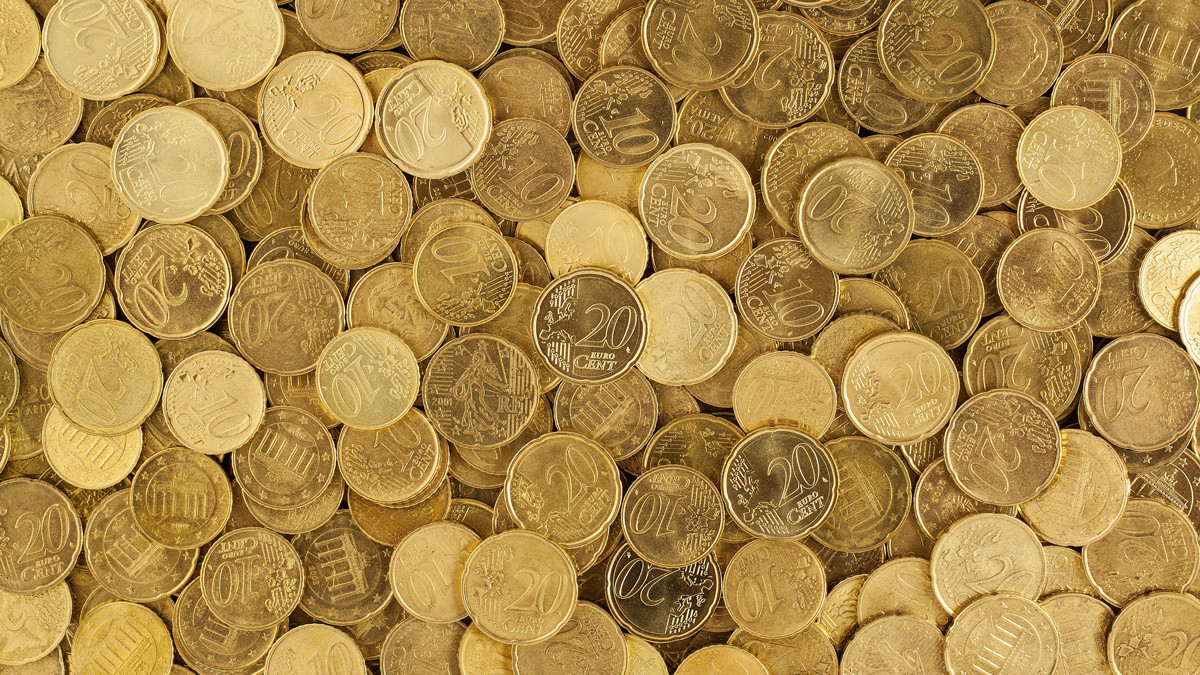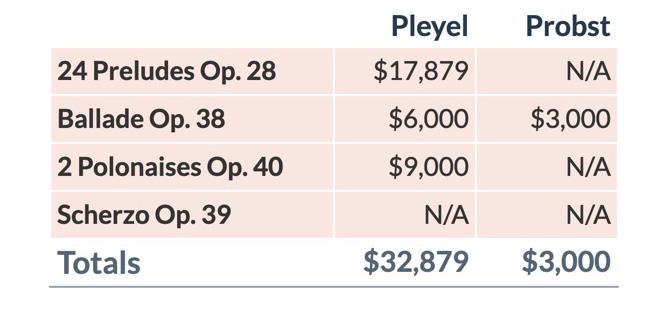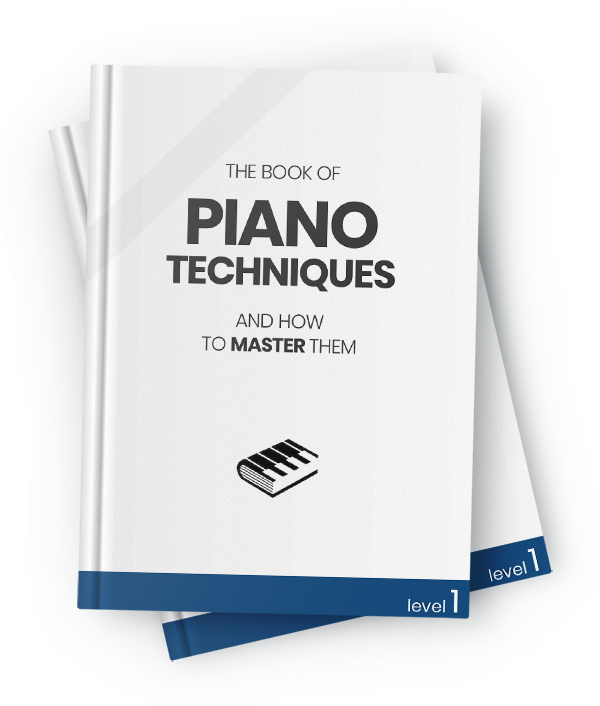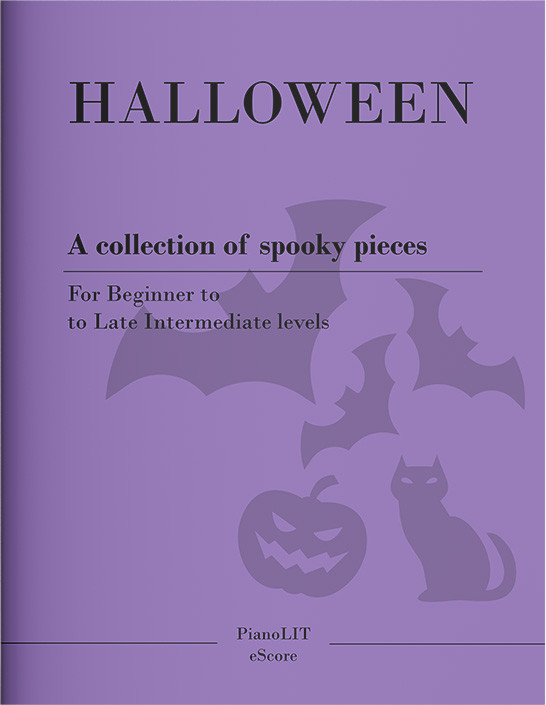How much money did Chopin make with his compositions?
If composers like Chopin were alive today they would certainly be making a lot of money, but that was not always the case in their lifetime. Chopin's letters help us answer the question "was Chopin rich?"
Aug 1, 2019 • 14 min read
16674

Want a heads up when a new story comes out?
Frédéric Chopin is, arguably, one of the most recorded, performed and written about classical pianists of all time. It is hard to find a concert hall today that does not feature his music all throughout its season. Chopin stands out in an era full of giants such as Brahms, Liszt, Mendelssohn, and others. If alive today, the polish composer would undoubtedly be wealthy and his compositions worth a lot of money.
But was it always like this? Was Chopin actually rich while he was alive? We read through many of his letters searching for clues about how much money he was being paid for his compositions and what kind of lifestyle he probably had. The events that follow are based on two letters Chopin wrote to Julian Fontana, a polish pianist and close friend, while in Mallorca in early 1839.
Two letters from Mallorca
On November 8th, 1838, Chopin moved to Mallorca, Spain, with his new girlfriend, a famous french author Amantine Dupin (known by her pen name George Sand). Chopin's frail health was deteriorating and they decided that a trip to the Spanish island would help him recover.
The trip turned out to be a nightmare and did very little to improve Chopin's health but, it somehow gave him the inspiration to write some notable pieces we know well today, such as his second Ballade Opus 38, the third Scherzo Opus 39, and the two Polonaises Opus 40. While in Mallorca Chopin also finished a set of short pieces he had been writing for the past 4 years: his famous Preludes Opus 28.
The 28 Preludes Opus 28
During their stay in Mallorca, in early 1839, Chopin writes to his close friend Julian Fontana:
"I send you the Preludes. Copy them, you and Wolff; I think there are no errors. Give the copy to Probst, and the manuscript to Pleyel."
Let's take a moment to understand who were all those people:
- Julian Fontana was a polish pianist and close friend of Chopin;
- Pierre Wolff was a piano professor at the Conservatory at Geneva and also friends with Chopin;
- Heinrich Albert Probst was a german publicist;
- Camille Pleyel was a french pianist and owner of the piano manufacturer Pleyel, Chopin's favorite piano;
The next part of the letter goes as follows:
"Take Probst's money, for which I enclose a note and reçu* at once to Leo; I have no time to write him a letter of thanks; and from the money that Pleyel will give you, that is: 1500 francs, you can pay the rent, 425 francs to the New Year, and politely give up the lodging. If you can let it for March, do; if not, I shall have to keep it for one more quarter. You can give the remaining 1000 francs to Nougie from me."
*reçu = receipt
Here is where we get our first glimpse at Chopin's finances and how he managed his income. Chopin asks that the money from german publicist Probst be sent to Leo. There are no records indicating who Leo was, but it looks like Chopin owed him a favor, as indicated in the phrase "I have no time to write him a letter of thanks". There is also no indication of how much money the publicist paid for the set of Preludes.
We do know, however, how much Pleyel paid him for the preludes. Besides being the manufacturer of Chopin's favorite piano, Camille Pleyel also owned the Salle Pleyel, a prestigious Parisian concert hall where Chopin performed on multiple occasions. The manufacturer paid a total of 2925 francs (adding the 1500, 425 and 1000 listed in the letter).
How much is that worth in today's money? That is a very hard question to answer because the value of labor and purchasing power in 1839 are difficult to compare to today's standards.
We estimate that 2925 francs amounts to something close to $17,879, give or take a few dollars. That was the total Pleyel paid Chopin for the set of 24 preludes.
•••
How did we arrive at this figure?
We followed the value of gold and the U.S. inflation rate between the 1800s and today. According to Wikipedia[1], in 1803 the franc was established "containing 290.034 mg of fine gold". That is approximately 0.01 ounces of gold per franc coin. From these figures, 2925 francs would contain 29.25 ounces of gold and that much gold would be worth[2] USD$553.70 back in 1839. According to an online CPI Inflation Calculator[3], USD$1 in 1839 was worth USD$32.29 today. Finally, if we multiply USD$553.70 by USD$32.29 we arrive at the final figure of approximately $17,879 for the set of preludes, which is a conversion rate of about 6 to 1.
Disclaimer: This is by no means an official conversion rate. With so many variables such as inflation rate, the value of labor, and purchase power, it is almost impossible to make such conversion with absolute precision. Different estimates will vary, so if you know of a more accurate rate please let us know in the comments below!
•••
Chopin indicates that 1500 francs should be used to "pay the rent", but he does not specifically write how many months of rent. We find an indication of that on the next letter, as you'll see next, where he goes into a little more detail about the lodging payment and says that it "will have to be paid for till the next quarter day (I think till July)".
Here we learn that he was paying the rent quarterly, which brings the monthly rent down to 375 francs. Based on that conversion rate of 6 to 1, this would be about $2,250/month for rent in today's money. This does make sense, given that the apartment in question was most likely located in an upscale neighborhood in Paris (we also have no indication as to how big the apartment was).
The next expense listed is a payment towards the "New Year" of 425 francs, or $2,550 for the New Year in today's money. Was it a party? Was it a trip? Unfortunately, Chopin does not explain exactly what those 425 francs were for. The rest of the money Chopin wants Fontana to send to another man called Nougie. The amount is 1000 francs, or $6,000.
Let's continue to the section where Chopin writes about his upcoming compositions.
A Ballade, 2 Polonaises, and a Scherzo
At the end of the same letter, Chopin announces that he will soon send some new pieces:
"In a few weeks, you shall have a Ballade, a Polonaise and a Scherzo. Tell Pleyel that I have arranged with Probst about the time of publication of the Preludes. I have still not had one letter from my parents!!"
Here, besides listing his next compositions, we also get a glimpse of how close Fontana was to Chopin. He suddenly writes about not having received letters from his parents, something quite personal, with double exclamation marks! Fontana was certainly someone Chopin trusted and regarded as a very close friend.
How much money did Chopin make with these new pieces? He writes to Fontana again a few months later to follow up with the previous requests and explain what to do with the payments for these new pieces. Here is where we learn how much Pleyel was supposed to pay him:
"You have probably used Wessel's money to pay the New Year quarter; but if not, please use it for this quarter. The other manuscripts must, no doubt, have only now reached you, for they spent a long time at the custom-house, and on the sea, and again at the custom-house. Sending the preludes, I wrote to Pleyel that I will give him the ballade for a thousand; for 2 Polonaises I have asked 1500. I think that it is not too much."
Using our conversion estimate, Pleyel would have paid $6,000 for the ballade and $9,000 for the 2 polonaises in today's money.
Now let's look at how much money he would make from the publisher Probst:
"So, after receiving the other manuscripts, you should have 2500 francs, and from Probst 500 for the ballade (or 600, I don't quite remember), which, together, makes 3000. I asked Grzymala to send me at least 500 at once. That's all about business."
It looks like Probst was going to purchase the rights to publish only the ballade for 500 or 600 francs, which translates to about $3,000 or $3,600.
At this point, we know that Chopin got a total of about 3000 francs for the ballade and the 2 polonaises, which translates to about $18,000 in today's money. There is no mention in his letters about how much Probst or Pleyel paid for the scherzo, or if they paid for it at all.
Conclusion
Let's take a look at the summary below. We listed the four pieces discussed in this post and how much Pleyel and Probst paid for each. N/A indicates the absence of comments from the composer to that particular payment. This seems to have been Chopin's main (if not only) source of income in the 3 months he was in Mallorca.

These amounts would not be too little if we were looking at a normal, unknown composer. That, however, is not at all the case. Chopin is a giant in classical music and is credited today for revolutionizing the piano technique and laying the foundation upon which generations of pianists created their music on the decades to follow. To put it in perspective, a top concert pianist today can make twice as much Pleyel paid Chopin for his 24 Preludes in one single night performing those same pieces!
We also learn from these letters how careful Chopin was in putting a price tag on his pieces. He writes "... for 2 Polonaises I have asked 1500. I think that it is not too much".

Yeah... that was not too much at all. Chopin's pieces have moved millions of people and inspired millions more ever since they were first performed. It is in fact impossible to put a fair price on music that has had such a profound and long-lasting impact. What we can assert is that combining the sales of CDs, DVDs, streaming services, books, live performances, and advertising, Chopin would be certainly making a fortune, if alive today.
- Chopin's letters , pp. 190-191. https://archive.org/details/chopinsletters00chop/page/190
- A Chopin Manuscript: Prelude in A-flat Major, op. posth. https://www.loc.gov/collections/moldenhauer-archives/articles-and-essays/guide-to-archives/chopin-manuscript/
- [1] https://en.wikipedia.org/wiki/French_franc
- [2] http://piketty.pse.ens.fr/files/capital21c/xls/RawDataFiles/GoldPrices17922012.pdf
- [3] https://www.officialdata.org/us/inflation/39?amount=1


